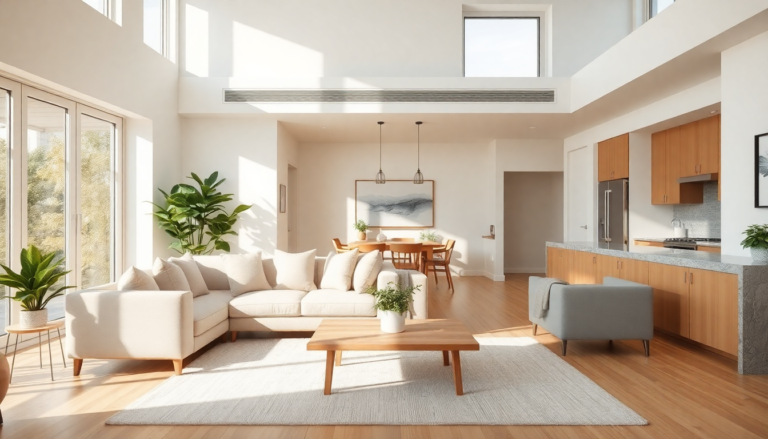Argomenti trattati
Selling a home can feel like navigating a complex maze—one that requires careful planning and a solid grasp of market dynamics. While you might pour your heart and resources into upgrades and staging, the offers you receive will ultimately hinge on a variety of factors, especially the design elements within your home. In today’s data-driven market, it’s essential to understand how particular features can either boost or diminish your property’s appeal to potential buyers. Are you ready to dive into the design details that could sway your sale?
The Role of Design in Home Selling
During my time in digital marketing, I discovered that data tells us a fascinating story about consumer behavior. When it comes to real estate, buyers aren’t just searching for a roof over their heads; they’re looking for a home that resonates with their aesthetic and practical needs. Design choices can speak volumes about a home’s upkeep and overall charm. For example, outdated design elements can signal to buyers that they’ll need to invest extra time and money in renovations post-purchase, which often translates to lower offers. Isn’t it interesting how much a fresh coat of paint or a trendy fixture can change perceptions?
Amanda Pendleton, a trend expert, points out that many sellers unknowingly select design features that actually hold back their home’s value. Choices like laminate flooring or outdated kitchen cabinetry can make potential buyers hesitate. They might interpret these elements as signs of neglect or potentially costly renovations ahead. Who wants to take on a fixer-upper when they could move right into their dream home?
Data Analysis on Common Design Pitfalls
Understanding which design features can negatively impact your offers is crucial. Data analysis reveals that certain common elements in homes can lead to surprising reductions in asking prices. For instance, homes with wood cabinets—especially those in darker shades or outdated styles—typically see offers that are about 0.40% lower than the asking price. This isn’t just anecdotal; it’s a trend echoed across various markets. Isn’t it eye-opening to think about how a simple choice can affect your bottom line?
Similarly, while security systems provide peace of mind, an overly complicated setup with numerous cameras can raise red flags for buyers. This could lead to a staggering 0.70% drop in offers. Buyers often prefer to select their security systems based on personal preferences, making excessive installations a potential liability rather than an asset. Who knew security could be a double-edged sword?
The allure of spacious walk-in closets is undeniable, but they can also be a double-edged sword. Buyers who don’t prioritize storage may view these large spaces as wasted square footage, leading to offers that reflect their perceived value of that space. Wouldn’t it be a shame to waste square footage that could be put to better use?
Case Studies of Design Impact on Home Sales
Take, for instance, a seller who invested heavily in a home gym, only to find that potential buyers perceived it as an unnecessary use of space. This feature resulted in offers that were nearly 0.80% lower, as buyers worried about the upkeep or possible repurposing of the gym. Similarly, while elevators are undeniably convenient, they can deter buyers due to associated maintenance costs, leading to a potential 1% decrease in offers. It’s curious how what seems like a luxury can sometimes turn into a liability!
Outdoor spaces also significantly influence buyer perceptions. A well-maintained patio can enhance a home’s value, but rooftop decks often raise eyebrows. Potential buyers may view them with skepticism due to concerns about weather damage and safety for children and pets, which can lead to a staggering 1% dip in offers compared to homes with more accessible outdoor areas. Which outdoor features do you think have the most appeal?
Practical Tactics for Optimizing Home Designs
To make your home stand out, focus on timeless and universally appreciated design elements. For kitchens, consider repainting cabinets in trendy colors like soft cream or white instead of opting for those dated wood finishes. This simple change can elevate the overall aesthetic and perceived value of your home. Isn’t it amazing how a little paint can go a long way?
When it comes to flooring, hardwood options like hickory or maple not only appeal to buyers but also stand the test of time compared to bamboo, which can seem outdated and prone to damage. Making thoughtful choices about materials can significantly boost buyer interest and the offers you receive. What materials do you think create the most inviting atmosphere?
Finally, as you prepare to sell, take the time to analyze the customer journey from the buyer’s perspective. Understanding their concerns about maintenance, aesthetics, and functionality can guide your renovation decisions, ensuring that your home aligns with market expectations. After all, wouldn’t you want to create an inviting space that speaks to potential buyers?

